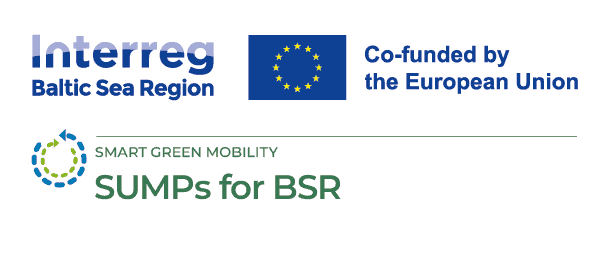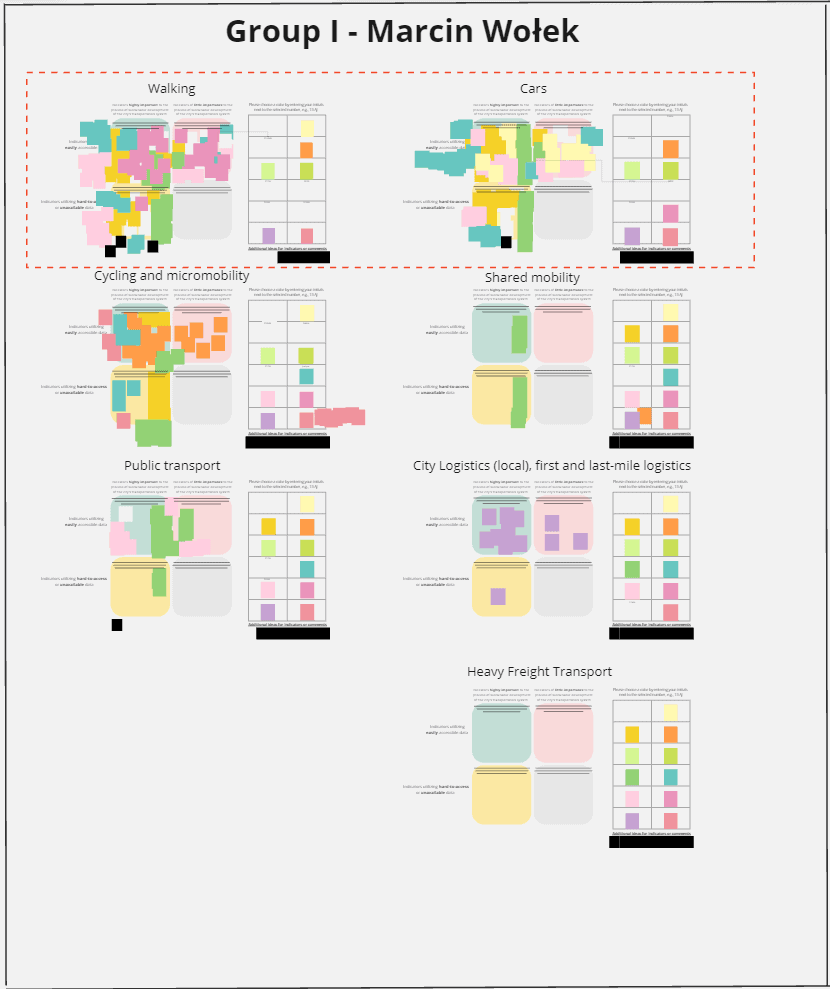
Sustainable Urban Mobility Indicator Workshop: Shaping the Future of Mobility in the Baltic Sea Region
18 September 2024
On September 5th the SUMPs for BSR project hosted an online workshop focused on discussions about the current state of monitoring and evaluation practices of Sustainable Urban Mobility Planning, the choice of indicators, and the challenges associated with this. The event attracted more than 30 participants from around the Baltic Sea Region, including representatives from the Ministries of Transport, urban mobility planners, city networks, and members of the European Commission’s Expert Group on Urban Mobility (EGUM). The results of the workshop will contribute to the development of monitoring and evaluation (M&E) framework for Sustainable Urban Mobility Plans (SUMPs) in the BSR.
The presentation of the findings of the baseline analysis on the M&E
The workshop commenced with several presentations that inspired the participants for productive discussions. After the short introduction into aims and goals of SUMPs for BSR project, Marcin Wołek and Aleksander Jagiełło from the University of Gdansk presented a baseline analysis, emphasizing the role of the modal split in diagnosing urban mobility trends across cities. Despite differences in methodology, the share of walking is reported above 20% in most cities, while the share of car usage remains high in the BSR, exceeding 30% of all trips.
One of the key findings that was discovered was the disparities in the organizational and institutional capacities of cities across the region. Smaller and mid-sized cities are often lacking access to complex databases, which poses a barrier to developing comprehensive monitoring systems for SUMPs. It was identified that, while active mobility, particularly walking, is recognised as crucial for sustainable urban mobility, it lacks precise monitoring. On a positive note, it was highlighted that cities are providing detailed carbon footprint measurements, aligning these efforts to their climate neutrality goals.
The importance of spatial planning in functional urban areas (FUAs) and metropolitan urban areas (MUAs), as well as the potential for greater use of modern technologies in data collection, was underlined. Access to national census data and collaboration with global platforms could greatly enhance the monitoring efforts of smaller municipalities. These innovations, in line with obligations from the EU’s TEN-T network, will play a crucial role in shaping future monitoring practices for SUMPs.
The role of EGUM in shaping the urban mobility indicators
Henrik Zetterquist from the Swedish Transport Administration, member of the European Commission’s Expert Group of Urban Mobility, brought an insightful reflections on the work EGUM carried in shaping the mobility indicators that were included into the “EGUM opinion on the Sustainable Urban Mobility Indicators”. This should eventually lead to the collection of UMI in all urban nodes of the TEN-T network by the end of 2027. He stressed the need for national dialogues to define adequate governance models for Urban Mobility Indicator (UMI) collection, advocating collaboration between public authorities and private stakeholders. Presentation also discussed the importance of phased implementation, suggesting a gradual approach where a limited number of indicators form the baseline, with further refinement over time.
Best practices from the city-partners
The cities actively involved in SUMPs for BSR project have presented their SUMP monitoring practices and goals. Vasiliki Zachari from Gävle, has presented the city’s ambitious goals to reduce CO2 emissions from the transport sector by shifting to public and active mobility modes. Gävle has set indicators for monitoring various mobility modes, tracking their progress three times a year toward their climate neutrality goals. Justyna Suchanek from Gdynia, shared the city’s experiences in updating its SUMP, focusing on key indicators such as, public transport share, cycling trips, multimodal transport usage and public satisfaction. Gdynia has faced challenges in collecting data consistently, but the city is refining its monitoring framework to better evaluate the current and future mobility measures.
Workshop
Following these presentations, participants were divided into three groups for focused discussions on indicators in seven key areas of urban mobility: Walking, Cycling and Micromobility, Public Transport, Cars, Shared Mobility, City Logistics, and Heavy Freight Transport. Each group was tasked with categorising indicators based on their relevance and the challenges associated with gathering reliable data.
The discussions in groups were highly praised by the organisers for their productivity. In walking category majority of indicators were identified as both of a high importance and easily accessible data. However, health-related indicators and indicators tracking the travel mode prior the survey were highlighted as important but difficult to measure due to limited data availability.
For public transportation, accessibility indicator was noted as crucial, but monitoring it effectively poses challenges. In cycling, the importance of monitoring the traffic safety was underlined. It was also suggested that, rather than focusing on number of trips taken by bicycle, tracking the total distance travelled might be more insightful to track the mobility behaviour. In case of cars, the monitoring of parking policy was mentioned as an important indicator, on contrast to the number of charging stations per 1000 cars, that wasn’t considered as important, despite the availability of data.
Regarding city logistics and freight transport, one of the biggest challenges identified was the difficulty of obtaining data from private stakeholders and companies. Similarly, while some cities reported easy access to micro- and shared-mobility usage data, others indicated that increased cooperation with private operators was necessary to improve data availability.
Moving forward
The feedback gathered during this workshop will contribute the work of refining the M&E framework for SUMPs, which will be tested and validated during the second year of the SUMPs for BSR project. This framework is designed to support cities in monitoring their SUMPs and effectiveness of active mobility measures and making informed decisions.






